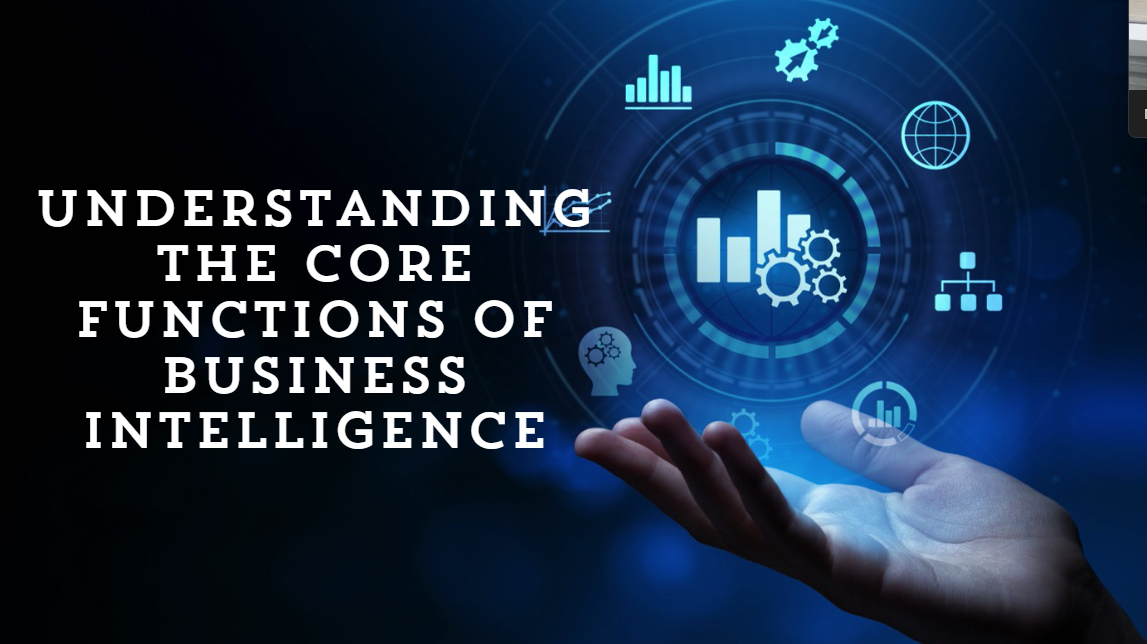
In today’s highly competitive business environment, the ability to make informed decisions quickly is crucial. This is where Business Intelligence (BI) comes into play. Business Intelligence refers to the technologies, processes, and tools used by organizations to collect, analyze, and present business data in a way that facilitates informed decision-making. At its core, BI helps businesses transform raw data into actionable insights. This article explores the key functions of Business Intelligence and how they contribute to business success.
- Data Collection and Integration
The foundation of any Business Intelligence system lies in its ability to collect and integrate data from various sources. This function involves gathering data from multiple internal and external sources, such as databases, spreadsheets, customer relationship management (CRM) systems, social media, and third-party data providers. The goal is to create a comprehensive view of the organization’s operations, market environment, and customer behavior.
Once collected, data integration takes place, where disparate data sources are combined into a unified view. This often involves the use of data warehouses or data lakes, where data from different systems is stored, cleansed, and structured in a consistent manner. Effective data integration ensures that all relevant data is accessible and ready for analysis, providing a solid foundation for the subsequent BI functions.
- Data Analysis
Data analysis is one of the most critical functions of Business Intelligence. This function involves applying various statistical, mathematical, and computational techniques to interpret and make sense of the collected data. The analysis can be descriptive, diagnostic, predictive, or prescriptive, depending on the business needs:
- Descriptive Analysis focuses on summarizing historical data to understand what has happened in the past.
- Diagnostic Analysis digs deeper to explain why something happened by identifying patterns and relationships in the data.
- Predictive Analysis uses historical data to forecast future outcomes, helping businesses anticipate trends and make proactive decisions.
- Prescriptive Analysis suggests actions based on the data analysis, guiding decision-makers on the best course of action to achieve desired outcomes.
By providing insights into past performance, understanding current trends, and predicting future scenarios, data analysis helps businesses make informed and strategic decisions.
- Reporting
Reporting is a core function of Business Intelligence that involves the presentation of data and analysis results in an easily understandable format. BI tools generate reports that summarize key metrics, performance indicators, and other relevant data points. These reports can be tailored to meet the needs of different stakeholders within the organization, from executives and managers to analysts and operational teams.
BI reports can take various forms, including static reports (e.g., monthly sales reports), ad-hoc reports (customized on demand), and automated reports (generated regularly with updated data). Effective reporting enables stakeholders to quickly grasp important information and make decisions based on accurate, up-to-date data.
- Data Visualization
Data visualization is a crucial function of Business Intelligence that involves representing data through visual elements such as charts, graphs, dashboards, and maps. The goal of data visualization is to make complex data more accessible, understandable, and usable by presenting it in a graphical format.
BI tools offer a wide range of visualization options, from simple bar charts to complex interactive dashboards. These visualizations help users identify patterns, trends, and outliers that might not be immediately apparent in raw data or tabular reports. By making data more digestible, visualization enhances the ability of decision-makers to quickly comprehend and act on insights.
- Performance Management
Performance management is a BI function focused on monitoring and managing an organization’s performance against its strategic goals. This function involves setting key performance indicators (KPIs) and benchmarks that align with the company’s objectives, tracking these metrics in real-time, and analyzing the results.
BI tools allow businesses to create performance dashboards that provide a real-time overview of how well the organization is performing across various areas, such as sales, marketing, operations, and finance. By continuously monitoring performance, businesses can identify areas for improvement, make necessary adjustments, and ensure that they remain on track to achieve their goals.
- Predictive Analytics and Forecasting
Predictive analytics and forecasting are advanced BI functions that use historical data and statistical models to predict future outcomes. These functions enable businesses to anticipate trends, identify potential risks, and seize new opportunities before they fully emerge.
For example, a company might use predictive analytics to forecast customer demand for a particular product, allowing them to adjust inventory levels accordingly. Similarly, forecasting models can help organizations anticipate market shifts, economic changes, or customer behavior, enabling proactive rather than reactive decision-making.
- Decision Support
The ultimate goal of Business Intelligence is to support better decision-making. BI tools and processes provide decision-makers with the insights they need to make informed choices, whether it’s optimizing operations, improving customer satisfaction, or driving growth.
Decision support systems powered by BI can range from simple query tools to complex systems that integrate predictive models and simulations. These systems help organizations evaluate different scenarios, assess the potential impact of various decisions, and choose the best course of action based on data-driven insights.
Conclusion
Business Intelligence is a powerful tool that enables organizations to harness the full potential of their data. Through its core functions—data collection and integration, data analysis, reporting, data visualization, performance management, predictive analytics, and decision support—BI transforms raw data into actionable insights. By leveraging these functions effectively, businesses can make informed decisions, improve operational efficiency, and gain a competitive edge in the marketplace.
